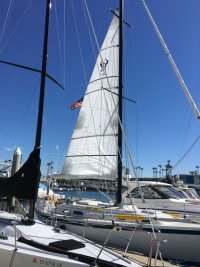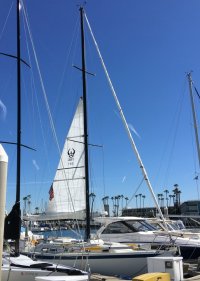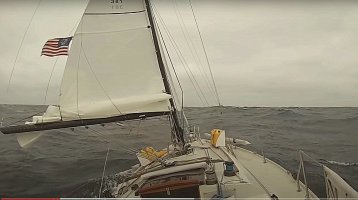I am in the process of speccing a new mainsail for an E35-3... which is definitely a learning experience (this will be my first purchased sail).
For those of you that have 3 reefs (or 2 with one very deep), where did you specify them? I am told by a sailmakers that normal is 12/24/36% (up luff from tack), but these do not seem nearly deep enough to me. Typical winds in my world are 25-30 all summer; would like to feel that I had more room to depower if offshore and it decided to run higher (as it apprently often does).
--> I am curious what people have chosen for the Ericsons (ideally the 35, but any of the 32/35/38 would be helpful). Many thanks for any suggestions.
* PS: I posted a more detailed question about this (with calculated numbers and other discussion) on sailnet; not trying to double-post here, but rather to get Ericson-specific feedback.
For those of you that have 3 reefs (or 2 with one very deep), where did you specify them? I am told by a sailmakers that normal is 12/24/36% (up luff from tack), but these do not seem nearly deep enough to me. Typical winds in my world are 25-30 all summer; would like to feel that I had more room to depower if offshore and it decided to run higher (as it apprently often does).
--> I am curious what people have chosen for the Ericsons (ideally the 35, but any of the 32/35/38 would be helpful). Many thanks for any suggestions.
* PS: I posted a more detailed question about this (with calculated numbers and other discussion) on sailnet; not trying to double-post here, but rather to get Ericson-specific feedback.






